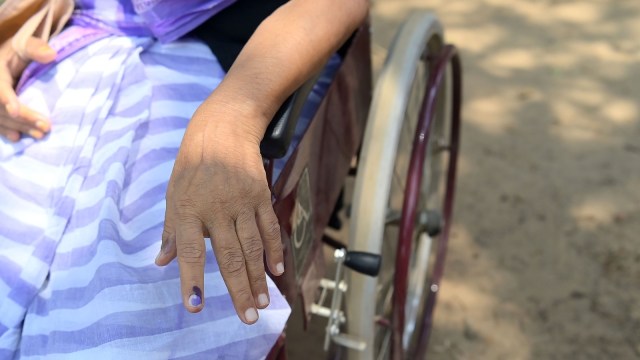
Written by Praveen Kumar G
During a recent journey in an A1 coach on the Karnataka Express train, I encountered a telling example of how accessibility for blind passengers is often treated as an afterthought. While there was some information provided in Braille — such as berth numbers and alarm details — the implementation was far from user-friendly.
The Braille plates were positioned in such a way that they were partially obscured by fixed luggage racks, making them difficult to locate and read. This is not merely a matter of inconvenience; for many travellers with visual disabilities, it is the difference between being able to navigate independently and having to rely on others.
What was even more concerning was the absence of vital information in Braille. Critical details such as emergency safety instructions, contact numbers of train attendants, cleaning service information, and procedures for seeking assistance were nowhere to be found in accessible formats. This approach — providing only partial and poorly positioned information — undermines the very purpose of accessibility. It is a piecemeal effort that signals compliance in appearance, but not in substance.
The Rights of Persons with Disabilities Act, 2016 (RPwD Act) is explicit: Persons with disabilities are entitled to equal access to information, facilities, and services without discrimination. Section 42 of the Act mandates that all service providers take steps to ensure that information is available in accessible formats, including Braille, audio, and electronic text. Indian Railways, as a public service provider, is legally and morally bound to implement these provisions fully. Partial compliance — such as offering only berth numbers in Braille — falls short of the law’s intent.
Inaccessible safety information can put blind passengers at direct risk during emergencies. Lack of contact details for attendants can leave passengers stranded without timely assistance. Accessibility is not a courtesy; it is a right that ensures dignity, independence, and safety.
It is commendable that Indian Railways has begun incorporating Braille signage in coaches, but the execution must improve dramatically. Authorities should provide complete travel-related information in Braille — safety instructions, contact numbers, complaint procedures, and service information. They must ensure logical and accessible placement of Braille signage — away from obstructions like luggage racks. Use multiple accessible formats — including audio announcements and QR codes linked to screen-reader-friendly information.
Accessibility should not be a box-ticking exercise. The RPwD Act provides a strong legal mandate — what is needed now is serious implementation with empathy, consultation with passengers with disabilities, and regular audits for compliance.
For India’s transport systems to truly serve all citizens, accessibility must move from being symbolic to being substantive, comprehensive, and rights-based.
The writer is VSO international social accessibility advisor